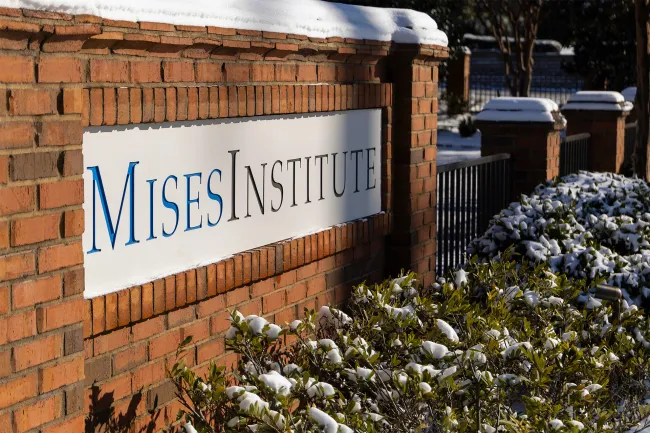Austrian Economics Overview
The Best Book on Money Ever Written
What's the best book on money ever written? That's an easy one: What Has Government Done to Our Money? by Murray N. Rothbard. The Mises Institute is bringing out a new edition, and uniting it with Rothbard's radical blueprint for monetary reform. You can help.
10. The Gold Standard in Theory and Myth
The mythology of gold really grew up with Keynes and the quantity theory. Here are six of those myths: the gold standard is unable to accommodate the needs of an growing economy; the quantity of money is arbitrarily determined; the gold standard is a government price fixing scheme; the gold standard subjects a country to alternating inflation and deflation; the gold standard requires high costs devoted to resources; and the gold standard results in high interest rates.
9. Money and Gold in the 1920s and 1930s: Defending the Rothbardian Position
Friedman’s book, Monetary History of the United States, tried to show the depression was caused by a deflation of the money supply by the Fed. Rothbard’s America’s Great Depression was published the next year in 1963. Rothbard argued that the Fed was actively inflating the money supply.
7. The Political Economy of the Chicago School: Libertarian or Jacobin?
The founder of the Chicago School, Frank Knight, was an avowed egalitarian. Rousseau was his influence. Jacobins believed in mass democracy and politics as the only way to implement their ideas. They hated aristocrats and religious leaders. Knight believed in progressive taxation. He wanted neocon social democracy.
8. The Debate on the Socialist Calculation Debate
The debate still continues. It is all about Mises’ initial article and then book on Socialism in 1922. He demonstrated the necessity of the price system and showed how subjective values were transformed into objective prices which could be used as meaningful cardinal numbers in economic calculation.
6. Keynes and the ‘New Economics’ of Fascism
Monetary inflation is the key way to bring about economic fascism. Fascism was a spending, borrowing government, militarism, imperialism, and a planned economy. Keynes’ followers came to power in the 60s with the Kennedy administration. Nixon went on to impose wage and price controls.
4. The Theory of Monopoly Price: From Menger to Rothbard
Prior to Mises there had been nothing written on the theory of monopoly price. Mises felt there could be some limited times of monopoly on the free market, e.g. diamond mines, but Rothbard felt that there could not be monopolies. Both theories developed out of Menger’s original thoughts.
5. Modern Monetary Theory: The Austrian Contribution
Monetary theory is where Austrians diverge the most from mainstream. Mises built a new taxonomy of money. He said money included any checking account deposits. The marginal utility of gold on the last day of barter was determined by the uses of gold. People then demanded gold as money because there was preexisting value. A paper dollar must have such a connection to money. Government cannot create money. Money is not neutral. The natural trend of prices in a market economy is falling.
2. The Origin and Decline of the Austrian School: Menger, Böhm-Bawerk, and Wieser
Where the classical economists had gone wrong was to speak of goods as if they were abstract classes. The Austrians noted that their value theory did not talk about concrete units and could not explain how individuals valued goods.



